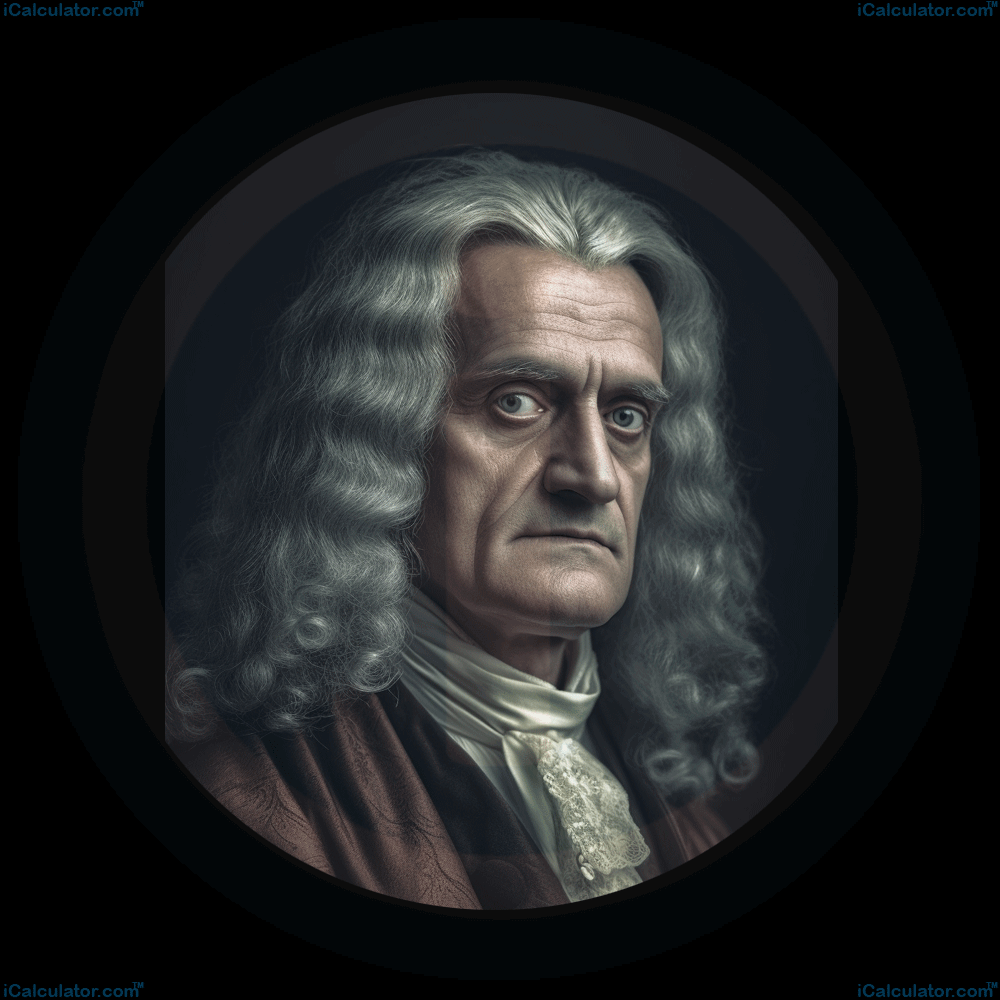Menu
Isaac Newton

Please provide a rating, it takes seconds and helps us to keep this resource free for all to use
Isaac Newton was born on January 4, 1643, in Woolsthorpe, Lincolnshire, England and died on March 31, 1727, in Kensington, London, England. Newton never married or had children. He lived most of his life in England, primarily in Cambridge and London. His early education was in The King's School, Grantham, after which he went on to study at the University of Cambridge's Trinity College.
Newton developed a deep interest in the natural world during his formative years. After witnessing an apple fall from a tree, he was intrigued by the forces that governed motion. This curiosity led him to pursue physics and mathematics, eventually formulating some of the most influential theories in these fields.
Newton's Discoveries
Newton's work in physics and mathematics fundamentally transformed our understanding of the natural world. He formulated the laws of motion and universal gravitation, which became the cornerstones of classical physics.
His investigations into light and optics led to the development of the first practical reflecting telescope, known as the Newtonian telescope. Despite the immense challenges posed by the limitations of the scientific tools and knowledge of his era, Newton's dedication to his research was unwavering.
Newton's Key Achievements
Newton's achievements in physics and mathematics were monumental. His book, "Philosophiæ Naturalis Principia Mathematica", is one of the most important scientific works ever written. In it, Newton established the laws of motion and universal gravitation. These laws form the foundation of classical mechanics, which has had wide-ranging impacts, from launching satellites into space to predicting the movement of celestial bodies.
Newton's Formulas
Among Newton's notable contributions is his formulation of the universal law of gravitation:
Where:
- F: Force between the two bodies
- G: Gravitational constant
- m1: Mass of the first object
- m2: Mass of the second object
- r: Distance between the centers of the two objects
Isaac Newton Quotes
The great physicist Isaac Newton is renowned for their intellect and advancement in the world of physics, here are some of their most famous and insightful quotes
Isaac Newton Tutorials and Calculators
The following tutorials and calculators are influenced by the work the great physicist Isaac Newton, each calculator contains a tutorial that explains Isaac Newton in the field
- Amplitude Resonance Angular frequency Calculator
- Average Velocity Calculator
- Binomial Coefficients Calculator
- Conical Pendulum Calculator
- DC Motor Speed Calculator
- Deceleration Without Time Calculator
- Displacement Calculator
- Drag Force on Disk Calculator
- Elastic Collision Calculator
- Focal Length of Optical Convex Calculator
- Force Conversion Calculator
- Hemispherical Sound Propagation Calculator
- Sound Speed of Isentropic Flow Calculator
- Kinetic Energy to Electrical Calculator
- Law of Cooling Calculator
- Math Sequence and Series Tutorial 12.3 - Binomial Expansion and Coefficients
- Maximum Height Projectile Calculator
- Momentum Calculator
- Orbit Pericenter Distance Calculator
- Partially Filled Horizontal Tank Volume Calculator
- Sig Fig Calculator
- Tangential and Radial Acceleration Calculator
- Toroid Inductance Calculator
- Torsional Pendulum Calculator
- True Wind Speed and Direction Calculator
- Vector Displacement Calculator